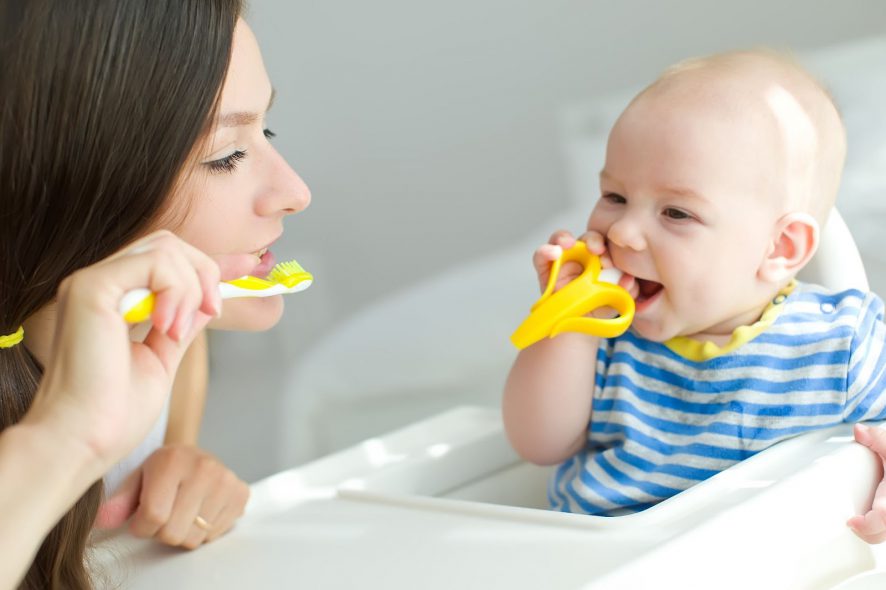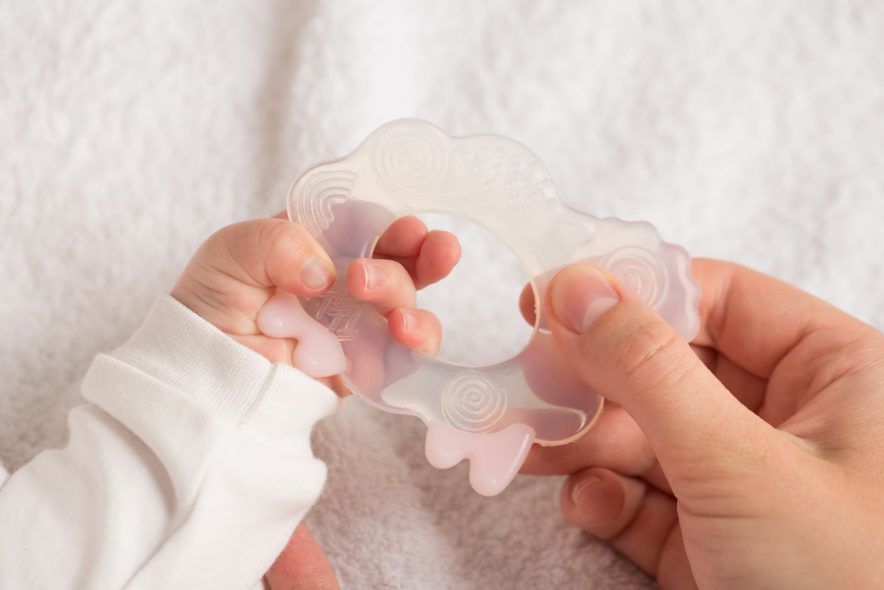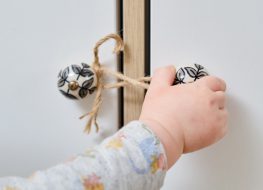
All parents, especially new ones, are “worriers.” They check everything on the internet as soon as their babies start to act up or grow a tooth!
You will get a lot of comments and advice on how to handle your grumpy little bub, even recommendations on the best teethers for babies. How can you tell which ones are facts and which ones are old wives’ tales?
We’re here to set the record straight and bust these myths so that you know what to expect when your baby starts teething.
MYTH #1: Teething Causes Fevers
FACT: Your child’s fever doesn’t have anything to do with their teething.
A baby’s normal temperature should range from 97 to 100.3 degrees Fahrenheit (36.5 to 37.5 degrees Celsius). Anything above 100.4 degrees Fahrenheit (38 degrees Celsius) means fever. Fighting infection is the number one cause of your little one’s fever.
What infection, you say? Perhaps it was from chewing something dirty or unsanitary, or from teething toys that are poorly made. Nevertheless, never dismiss your infant’s fever as teething.
According to the American Academy of Pediatrics, here are the following proven symptoms or signs of teething:
- Sleep disturbances
- Drooling or salivating
- Rashes
- A runny nose
- Irritability
- Mild temperature increase
MYTH #2: Teething Causes Diarrhea
FACT: Not true at all.
Babies who are just starting to eat solids don’t have consistency in their stools, just the same as adults. It varies depending on the baby food they eat.
The tummy ache is most probably caused by what they ate—dairy products, starchy vegetables, or, perhaps, grandma gave your little one Tootsie Rolls.
If your baby has diarrhea that doesn’t go away quickly, it’s not due to teething. You should talk to your pediatrician if it continues.
MYTH #3: Teeth Start to Show in a Random Order
FACT: There is a specific order in which your child’s baby teeth erupt.
Normally, the lower front teeth will start to show, then the upper central front teeth, followed by the rest of the upper front teeth, then canine teeth, and lastly, the molars. Usually, they erupt in twos.
But parents think it is in random order because it varies from one infant to another. But after you learn the order in which your baby’s teeth come out, it is easier to spot and predict which teeth will come out next.
MYTH #4: Fluoride is Bad for Babies
FACT: This is true. It isn’t good for babies and even you, dear parents, to ingest fluoride.
Fluoride is considered a toxin but swallowing a small amount is fine. That’s why there are organic toothpaste and even natural teethers for your babies. There are also recommended toothpaste with only small amounts of fluoride.
Fluoride is good for teeth cleaning but not for eating. So parents, guide your kids on how to brush their teeth properly.
MYTH #5: Brushing Your Baby’s Teeth and Gums is Harmful
FACT: It is perfectly safe for your baby’s teeth. Start proper dental care early!

As soon as your infant’s teeth emerge, it is important to brush those baby teeth with a bit of toothpaste to avoid any tartar or cavity buildup.
Your baby’s gums are sensitive and tender but massaging them is essential for soothing your little one. There are plenty of food-grade silicone toothbrushes for your child to use.
If you don’t want to do those things, you can always get the best teethers for babies 6–12 months.
MYTH #6: Visit Your Infant’s Dentist Only When Needed
FACT: Your baby’s first tooth eruption needs your dentist’s attention.
We understand that you might be practical and a little skeptical about checkups. However, it is highly recommended that your baby gets their first dental checkup as soon as a tooth erupts.
Early dental visits can give you an idea about your child’s future dental health. Moreover, it gives the dentist the chance to see if any possible dental problems can emerge later.
MYTH #7: Using Meat Bones Reduces Teething Pain
FACT: Your baby isn’t the same as your furbaby.
Chewing on bones can improve jaw strength, remove any plaque buildup, and comfort the teething pain of your puppy. It may work on your teething Labrador pups but your babies, as we mentioned, have extremely tender gums.
Sharp bones might injure your little one’s mouth. Chewing on bones can also cause trauma to your teething baby’s sore gums and hinder other teeth from coming out.
MYTH #8: Rubbing Brandy on Your Babies’ Gums Work
FACT: Never give your teething baby alcohol!
We all have that old family member who’s just trying to help you with your crying infant. But don’t even try giving your little one any alcoholic drink; it’s unsafe. Plus, it doesn’t help with your baby’s gums at all.
Imagine the same effects of being drunk except on your precious one—the foul taste, the numbing effect on your lips and throat, not to mention the headaches. Even just a little alcohol can have a strong effect on them.
MYTH #9: Numbing Gels Are Safe
FACT: Numbing gels have lidocaine or benzocaine—poisonous for your baby.
Lidocaine poisoning can lead to damage of the nervous system and heart. It could also give your baby seizures. Watch out for early signs of this such as dizziness, numbing of the mouth, and numbing or tingling of the tongue.
In addition, ingesting benzocaine can develop methemoglobinemia, a rare but fatal blood condition.
Just skip giving your child mouth-numbing gels entirely. Instead, if your teething baby is restless, give them the best teether for 6–12 month old babies.
MYTH #10: All Baby Teethers and Other Baby Products in the Market are Safe.
FACT: Not all of them are safe for your precious bundle of joy.

The market is huge, especially when online stores come into play. Unfortunately, if something is affordable and looks good, parents will buy them without researching the baby product first.
Amber teething necklaces and teething toys are known to soothe teething babies due to succinic acid being released from the beads. But this has never been proven. In addition, these beads make your baby prone to choking or strangulation.
Some baby teethers, such as wooden teethers and teething rings, are not made from food-grade silicone, are not FDA-approved, and may contain BPA, lead, PVC, and phthalates.
In addition to dubious quality, poorly made teether toys may have a texture that discomforts your teething baby.
On the flip side, there are high quality products out there! You just need to do your research.
Only The Best For Your Baby
So the truths about teething are out. We hope you can finally relax and do what’s best for your baby.
Teething is a sign that your little lovebug is growing up—although it’s an uncomfortable process for you and your baby, it doesn’t have to be unnecessarily painful. To keep them safe and happy, get them the best of the best.
At Ashtonbee, we guarantee high-quality baby products for the safety and enjoyment of your little one. Check out our premium teethers and other baby items for sale. Shop now!



